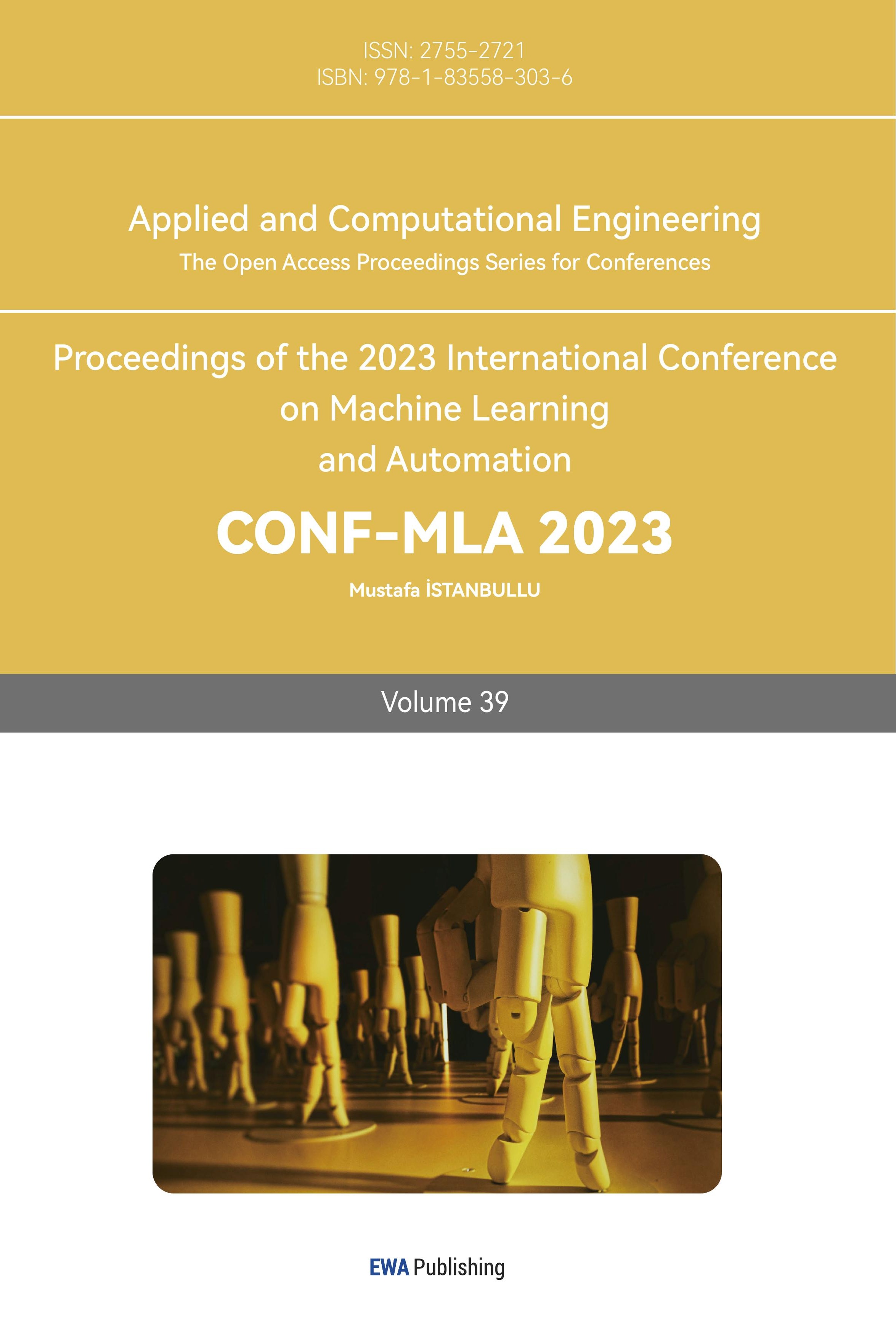References
[1]. Lewicki M S. A review of methods for spike sorting: the detection and classification of neural action potentials. Network, 1998.
[2]. Obeid I, Wolf P D. Evaluation of spike-detection algorithms for a brain-machine interface application. Biomedical Engineering IEEE Transactions on, 2004, 51(6):905-911.
[3]. Noninvasive Brain–Machine Interfaces for Robotic Devices. Annual Review of Control Robotics and Autonomous Systems, 2021, 4(1).
[4]. D Valencia, Alimohammad A. Neural Spike Sorting Using Binarized Neural Networks. IEEE Transactions on Neural Systems and Rehabilitation Engineering, 2020, (99):1-1.
[5]. Yuan, M. An absolute-value detector with threshold comparing for spike detection in the brain-machine interface. Journal of Physics: Conference Series, 2021, 2113(1): 012038.
[6]. Charles S. De Morgan’s law and theorems. 2013.
[7]. S. Prema. Comparative Analysis of Different Full Adder Circuits. Programmable Device Circuits and Systems,2013,5(2).
[8]. Efstathiou Constantinos,Kitsos Paris. Efficient majority logic magnitude comparator design. Microprocessors and Microsystems,2021,82.
[9]. Efstathiou, C., & Kitsos, P . Efficient majority logic magnitude comparator design. Microprocessors and Microsystems, 2021, 82: 103-112.
[10]. Sharroush, S. M., & Abdalla, Y. S. Parameter extraction and modelling of the MOS transistor by an equivalent resistance. Mathematical and Computer Modeling of Dynamical Systems, 2021, 27(1): 50–86.
[11]. Kim, K., & Park, S. Delay-time modeling and critical-path verification for CMOS digital designs. Computer-Aided Design, 1991, 23(9): 604–614.
[12]. Sharma, V., & Rajawat, A. Review of Approaches for Radiation Hardened Combinational Logic in CMOS Silicon Technology. IETE Technical Review, 2018, 35(6): 562–573.
Cite this article
Wen,F. (2024). Design and optimization of a 16-bit spike detector based on 90nm CMOS technology. Applied and Computational Engineering,39,230-243.
Data availability
The datasets used and/or analyzed during the current study will be available from the authors upon reasonable request.
Disclaimer/Publisher's Note
The statements, opinions and data contained in all publications are solely those of the individual author(s) and contributor(s) and not of EWA Publishing and/or the editor(s). EWA Publishing and/or the editor(s) disclaim responsibility for any injury to people or property resulting from any ideas, methods, instructions or products referred to in the content.
About volume
Volume title: Proceedings of the 2023 International Conference on Machine Learning and Automation
© 2024 by the author(s). Licensee EWA Publishing, Oxford, UK. This article is an open access article distributed under the terms and
conditions of the Creative Commons Attribution (CC BY) license. Authors who
publish this series agree to the following terms:
1. Authors retain copyright and grant the series right of first publication with the work simultaneously licensed under a Creative Commons
Attribution License that allows others to share the work with an acknowledgment of the work's authorship and initial publication in this
series.
2. Authors are able to enter into separate, additional contractual arrangements for the non-exclusive distribution of the series's published
version of the work (e.g., post it to an institutional repository or publish it in a book), with an acknowledgment of its initial
publication in this series.
3. Authors are permitted and encouraged to post their work online (e.g., in institutional repositories or on their website) prior to and
during the submission process, as it can lead to productive exchanges, as well as earlier and greater citation of published work (See
Open access policy for details).
References
[1]. Lewicki M S. A review of methods for spike sorting: the detection and classification of neural action potentials. Network, 1998.
[2]. Obeid I, Wolf P D. Evaluation of spike-detection algorithms for a brain-machine interface application. Biomedical Engineering IEEE Transactions on, 2004, 51(6):905-911.
[3]. Noninvasive Brain–Machine Interfaces for Robotic Devices. Annual Review of Control Robotics and Autonomous Systems, 2021, 4(1).
[4]. D Valencia, Alimohammad A. Neural Spike Sorting Using Binarized Neural Networks. IEEE Transactions on Neural Systems and Rehabilitation Engineering, 2020, (99):1-1.
[5]. Yuan, M. An absolute-value detector with threshold comparing for spike detection in the brain-machine interface. Journal of Physics: Conference Series, 2021, 2113(1): 012038.
[6]. Charles S. De Morgan’s law and theorems. 2013.
[7]. S. Prema. Comparative Analysis of Different Full Adder Circuits. Programmable Device Circuits and Systems,2013,5(2).
[8]. Efstathiou Constantinos,Kitsos Paris. Efficient majority logic magnitude comparator design. Microprocessors and Microsystems,2021,82.
[9]. Efstathiou, C., & Kitsos, P . Efficient majority logic magnitude comparator design. Microprocessors and Microsystems, 2021, 82: 103-112.
[10]. Sharroush, S. M., & Abdalla, Y. S. Parameter extraction and modelling of the MOS transistor by an equivalent resistance. Mathematical and Computer Modeling of Dynamical Systems, 2021, 27(1): 50–86.
[11]. Kim, K., & Park, S. Delay-time modeling and critical-path verification for CMOS digital designs. Computer-Aided Design, 1991, 23(9): 604–614.
[12]. Sharma, V., & Rajawat, A. Review of Approaches for Radiation Hardened Combinational Logic in CMOS Silicon Technology. IETE Technical Review, 2018, 35(6): 562–573.









